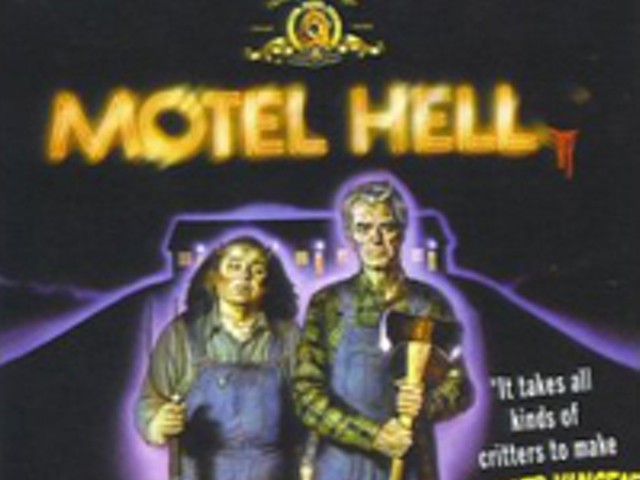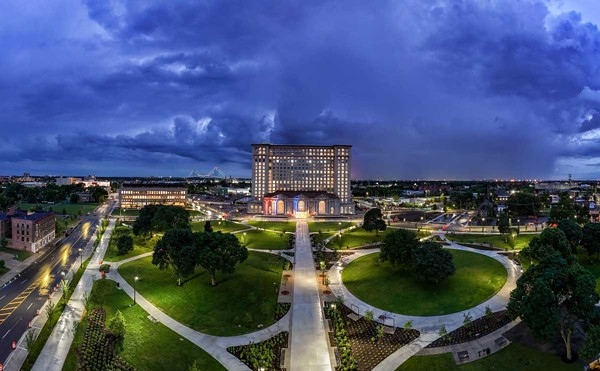When I was 10 years old, my friends and I freely wandered our neighborhood on Detroit's west side. That included exploring the alleys and rooftops around the slaughterhouses at Michigan Avenue and Humboldt, hopping onto the sides of moving freight trains at the overpass near Grand River and Warren, exploring the odd abandoned house or building or just going around the block to the playground at Myrtle (now Martin Luther King Jr. Boulevard) and Lawton.
I regularly walked more than a mile to the public library at Warren and West Grand Boulevard, with a stop at my godmother's house for a cookie or a swing through Stinson's funeral home to look at dead people.
But today I won't let my 10-year-old daughter leave the block without supervision. I'm sure part of it is a gender difference. My sisters didn't have the freedom of movement that I had. But it's a different, more complex world out there now. Back then, drive-by shooting was something you saw in old gangster movies, and there wasn't enough car-jacking to warrant a name. If you were going to steal a car, you waited like a decent thief until the owner parked and exited the vehicle.
Those were the bad old days when Dr. Martin Luther King Jr. was leading marches, and protesters were getting fire-hosed and attacked by dogs. Lynching still cast a shadow in the South, and racial segregation was commonplace almost everywhere. In 1964, the stakes of the presidential election to my 11-year-old mind were simple: If conservative Republican Barry Goldwater won, he was going to send all the black people back to Africa, a scary, backward place where people lived in jungle villages and were eaten by lions.
There were but a handful of black athletes in major colleges and professional ranks, and there was no such thing as a black television show. When Julia, starring Diahann Carroll, hit the airwaves in 1968, it was the first American TV series starring an African-American actress not playing a maid. That was the same year that King was murdered. African-Americans were rising up in rebellion and ripping apart big cities across America.
Still, most of the problems of black America were seen as coming from outside the black community. Segregation, lack of jobs, educational opportunities and political power were seen as the problems.
"I remember there was clear institutional discrimination in terms of certain opportunities," says native Detroiter Melba Boyd, a poet and director of Wayne State University's Department of Africana Studies. "My father had a degree in engineering but couldn't work as an engineer. He worked at the Post Office."
Civil rights was a big concept fought over what today might seem like little issues. The 1955 Montgomery bus boycott was about the right to sit anywhere you wanted to on a bus. By the end of the 1960s here in Detroit, white people in droves were leaving for the suburbs, saying you can have the bus and the whole damn city. In 2008, it seems most black, brown and yellow people who can afford to have done the same.
How much has changed in the intervening years? Is the world my daughter inhabits any better than the one I grew up in? She can turn on a television almost anytime and see blacks and Latinos acting, or playing music and sports. She can go to school, live and eat anywhere I can afford to take her. She can even watch a man whose father was Kenyan run for the Democratic presidential nomination — and he stands a good chance of winning. That would have been the punch line of a joke in 1968.
This is the world she sees. A CNN/Essence Magazine/Opinion Research Corp. poll reported last week that 78 percent of white people said the United States is ready for a black president. Only 69 percent of African-Americans said the same thing. If those findings are true, it shows that whites have come a long way in terms of trusting that a black man can be all that — or at least Obama can. It also shows that blacks aren't quite that far along in terms of believing that white people are ready for us.
But my daughter also sees some very negative things. For instance, a recent report from the Pew Center shows the United States incarcerates 1 in 100 adults — a higher percentage than any other country. But the fact that more than 1 in 9 black men between the ages of 20 and 34 is behind bars makes it seem that folks are more ready to see us in a cage than in the White House.
The other side of the coin is the gender thing. The only opponnent left against black male candidate Barack Obama is white female candidate Hillary Clinton. Either of them winning would be a milestone. While the civil rights movement dominated the 1960s, the women's rights movement took over in the 1970s. Black female candidate Shirley Chisholm brought both those worlds together in 1972 when she ran for the Democratic presidential nomination. However, the paltry 172 delegates she won showed that people weren't near ready for that idea.
The gender division runs through all races while race itself has evolved into numerous, more slippery problems. The Civil Rights Act of 1964 more or less did away with the legal sanctions for racism and sexism, but it didn't do that in the hearts and minds of all people. Later on, the good intentions of affirmative action led to loathing on the part of white men who felt they were being denied opportunity, and they've challenged and rolled back those gains piece by piece.
The big issue of global warming and environmental justice swings over us like the Sword of Damocles. It was there when I was a child but we didn't know it. My daughter is growing up in a world that is not necessarily better than the one I grew up in.
"Students are coming to Wayne with opposition from their neighborhoods," says Boyd. "They're not being encouraged to get an education. They're being told you're going to change. You're not going to be black anymore. Students come to me saying they're being told that they're trying to be better than they are. They're living in a sea of ignorance and fear. When I was young, families valued education and wanted their children to do better."
Now the neighborhood has shrunk to the block. There aren't many playgrounds or community centers. The real community was once built around your church or your school. Nowadays it's something you hear more about online and participate in while alone with your computer. But it doesn't make up for the human contact and bonding of a neighborhood. And it certainly doesn't make up for the eyes and ears of the village that might keep my daughter safer taking a walk.
We took our dog for a walk in Palmer Park the other day. While I reminisced about the old days when my friends played there, my daughter looked around and said, "It's all falling apart. They should fix it up."
Obama or Clinton might be able to wander the White House rose garden next year, but Detroiters don't have decent, safe parks for our kids to play in. Are things better or are we just going in circles?
Larry Gabriel is a writer, musician and former editor of Metro Times. Send comments to [email protected]





